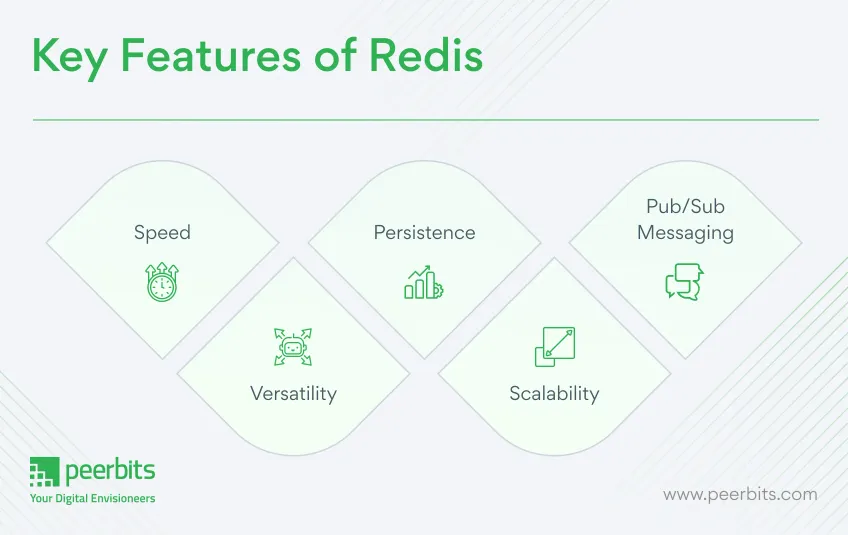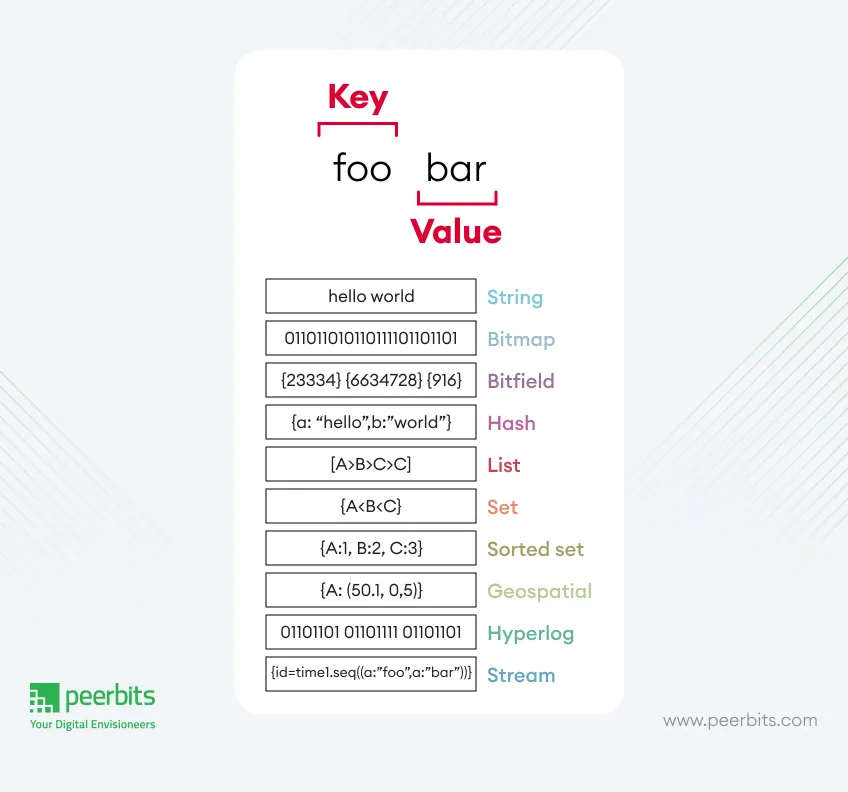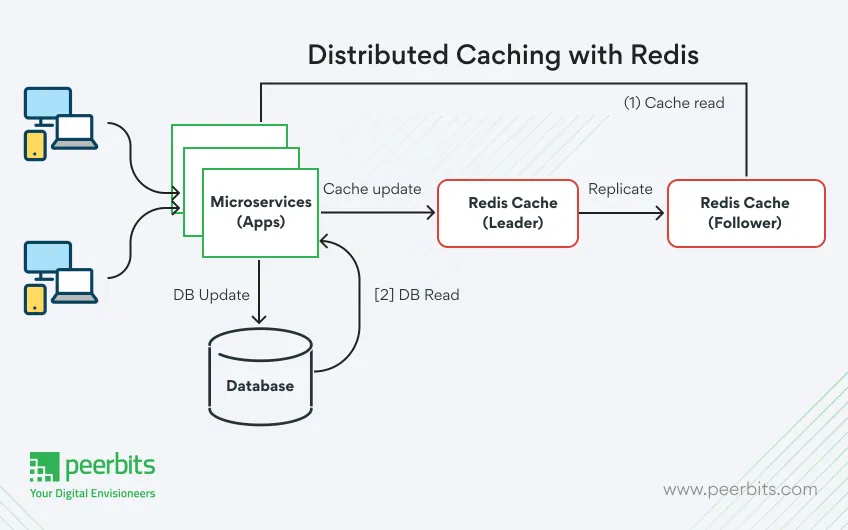Redis, the acronym for Remote Dictionary Server, stands out as an open-source, advanced key-value store, renowned for its speed, versatility, and adept handling of various data types.
Redis operates as an in-memory data structure store at its core, Often referred to as a data structure server ensures lightning-fast read and write operations, In this comprehensive guide, we will go deepen into the key features of Redis, its applications, and how to effectively leverage this powerful database for modern applications.
What are the key features of Redis?
Key features of Redis encompass lightning-fast performance, support for various data structures, seamless replication, and a robust set of functionalities, making it a go-to solution for caching, messaging, and real-time analytics.

Speed
- Redis operates as an in-memory data store, enabling smooth and fast data access with speedy read & write operations.
- Imagine having instant access to a notepad on your desk, where you jot down things you need often. and Redis provides a similar quick retrieval of data.
Versatility
- Functions as a versatile toolbox capable of handling different data structures.
- Offers flexibility in storing various types of information, whether it's a single word, a list of items, a bunch of related details, or something else, making it a valuable asset for diverse purposes.

Persistence
- Ensures data durability by saving information not only in memory but also on a hard drive.
- Similar to writing important notes from a notepad in a journal for long-term accessibility.
Scalability
- Scales seamlessly with the growing volume of data.
- Manages increased information by making copies, grouping similar data, or distributing the workload efficiently.
Pub/Sub Messaging
- Facilitates effective communication between different parts of a program or multiple programs.
- Acts like a broadcasting system, allowing timely information sharing and smooth collaboration.
Redis’ strengths in speed, adaptability, reliability, scalability, and communication make it a popular choice for many developers working on modern applications.
How to get started?
Build high performance applications quickly with our Redis service. Get scalable and exceptionally fast solutions for your business!
Applications of Redis
Redis finds applications in various scenarios. Some of them are listed below:

Caching: It's commonly used as a caching layer to store frequently accessed data, reducing load on primary databases and improving overall application performance.
Real-time Analytics: For applications requiring quick data analytics, Redis's ability to perform complex operations on in-memory data makes it a preferred choice.
Queues and Messaging: Its pub/sub and list structures make it suitable for implementing message queues, facilitating reliable communication between different parts of an application.
Overall, Redis is a versatile and powerful tool in the realm of databases, offering speed, flexibility, and a range of features that cater to diverse application needs.
Why and how to use Redis Database for modern applications?
In today's fast-paced world, where speed and efficiency are paramount in application development, the choice of the right database technology plays a crucial role. Among the array of available options, Redis stands tall as a dynamic, high-performance, and versatile in-memory database. In this blog, we'll explore why Redis is a go-to solution, what makes it exceptional, and how you can leverage its capabilities effectively.
Picturisation for Redis usability and Distributed Caching with Redis:

Distributed Caching

How to Effectively Use Redis?
Redis is like a superhero tool that works super-fast and can do a lot of things with data. To make the most of it, you need to learn how different parts of it work, use it to store information smartly, chat between different parts, and make sure it stays strong when lots of stuff is happening at once.
-
Understand Your Requirements Identify specific functionalities or data requirements where Redis's in-memory capabilities can offer significant advantages.
-
Data Modeling Design your data structures in Redis to align with your application's needs. Utilize Redis's various data structures wisely for optimal performance.
-
Utilize Features Wisely Explore Redis features like persistence options, replication, clustering, and transactions to maximize its potential for your application.
-
Monitoring and Optimization Regularly monitor Redis performance using tools like RedisInsight or built-in monitoring commands. Optimize data access patterns and configurations for better efficiency.
-
Implement the Best Practices Follow the best practices for deployment, security, and disaster recovery to ensure a robust Redis setup.
How Peerbits can help you with Redis database services?
Peerbits, as a leading tech company, offers expertise in implementing, optimizing, and managing Redis databases. They assist in setting up Redis for specific needs, optimizing configurations, and providing ongoing maintenance for smooth operation and maximum benefit from Redis features.
Final Thoughts
Redis isn't just another database; it's a catalyst for building high-performance, scalable, and responsive applications. Its speed, versatility, and range of features make it an indispensable tool for modern developers. By understanding its strengths and implementing it effectively, Redis can elevate your application's performance to new heights.
In a world where every millisecond counts, Redis isn't just a database; it's a competitive advantage.









